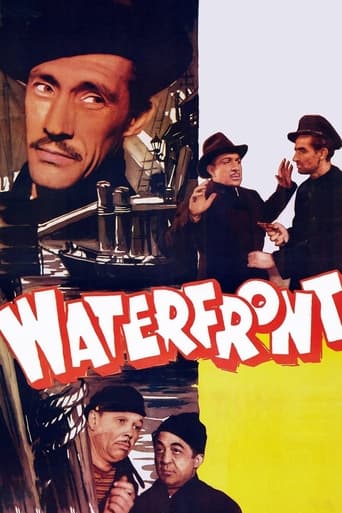Cristi_Ciopron
A PRC movie from '44, directed by Sekely, and starring Carradine, J. Carrol Naish as the optometrist (played in a style forecasting Suchet's Poirot), Claire Rochelle as the waitress, Bleifer as the café owner, Maris Wrixon as Freda. But a lousy performance from the bovine Terry Frost as the young businessman Jerry Donavan.The Hauser boardinghouse was at the center of this world, uniting the café (the waitress, the bartender, the owner), the business (Max Kramer, the Hauser daughter, and Jerry), the copper Mike. When the extortionist meets the businessman, he has employees who live in the same boardinghouse with his guest's employee. When the extortionist meets the optometrist, it's the same. The copper knows the Hauser daughter.A spy arrives in the city for an assignment which, even when deciphered, he never completes.The usual complaints are that the movie doesn't resemble MTV ('plods along', 'meanders around a bit'); there has to be something that flatters the half-wits tendency to whine, to grumble, to sulk. Nowadays, even '40s B cinema requires education.Two things: the coppers could of been summoned by the waitress for the shootout; and after the raid, Kramer's denunciation is assumed, guessed by one character.
kevin olzak
1944's "Waterfront" is a reasonable example of a Poverty Row spy picture, this one from PRC rather than Republic or Monogram. None could be considered classics of course, generally set in the US and inexpensively confined to just a few tiny sets. What makes these stand out at all isn't the script but the actors involved, in this case John Carradine and J. Carrol Naish, both undercover Nazi agents working the San Francisco waterfront. Naish's Dr. Carl Decker is an optometrist in possession of a code book that can decipher the secret instructions for Carradine's Victor Marlow, newly arrived and impatient to get started. The film opens with the code book being stolen, and by the time it's over all the bad guys are captured or dead (no one comes off very smart). Just a few months before the iconic PRC "Bluebeard," Carradine relishes his villainy, playing his final Nazi role, while Naish provides good support, as do Edwin Maxwell and John Bleifer, veteran performers all. Actress Maris Wrixon previously worked with Boris Karloff in both Warners' "British Intelligence" and Monogram's "The Ape," and reunited with Carradine in Monogram's "The Face of Marble."
Bill Barstad
If you don't pay attention too closely, this is a fairly entertaining film. J. Carrol Naish is fine as the Nazi spymaster. John Carradine just wasn't sinister or psychotic enough to make his character believable, but was better than most of the rest of the cast, though John Bleifer stood out as the slimy, double-dealing blackmailer. I thought it was pretty well directed, too.I can see why the police arrested the male romantic lead, but if the FBI had really done their job he would have been quickly released, since he had no gun and none was recovered at the scene, had no gunfire residue on his hands (The paraffin test had been mentioned in movies of the 1930s.), and had a legitimate reason for being at the murder scene. Yet he went to trial for the murder. I don't know much about guns, but I recognized the iconic Luger pistol used by the murderer. The FBI identified the murder weapon as a Mauser. A pretty clumsy portrayal of the FBI for this marginally propagandistic spy drama.I watched a copy downloaded from The Internet Archive. The print from which the file was made had seen better days.
Charles Delacroix
I just saw this movie and thought, on the whole, that this is a worthwhile WWII spy flick.John Carradine provided a very good, very chilling performance as the lead "bad guy". Other performances were sound. The script seemed to me to be fairly solid as well. The general flavor of foggy, drippy, SF waterfront "trouble" was effective and appealing.This was produced in 1944 when, of course, domestic spying was a real concern, and ethnic heritage in an Axis nation could sometimes excite not always fair concerns about loyalty. All the more impressive, then, is the sympathetic depiction of a German-American family.All in all a film worth seeing if you like WWII-era flicks about the war and espionage.


